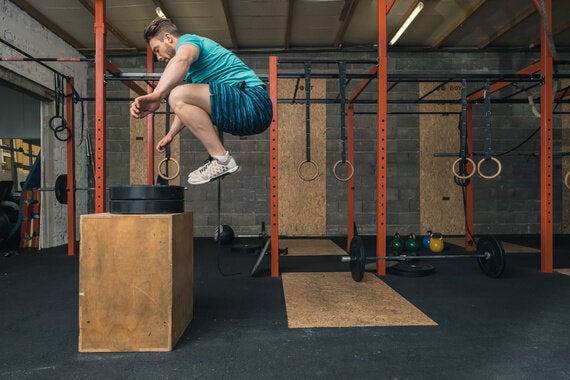Drum roll please... because you aren't one.
Done. There we go, I'm glad we got that covered.
Now I know you've read all about what Usain Bolt and Jessica Ennis do in their training sessions but I'm here to tell you that what they do has next to nothing to do with what you, my good office worker friend need to be doing in your training sessions.
It all comes down to a simple difference; they train to perform, you and I train to look good naked.
And look, before anyone says anything about being healthier, let me just say that almost everyone I ever sit down with tells me they want that. It's a commendable aim but one that I'm going to say doesn't really hold up for almost all of you.
Here's why I think that. You will be healthier, in the sense that you will statistically live longer, simply by adding exercise into your life, regardless of whether your body actually changes in appearance. Would you be happy with that outcome? No? Good. So let's accept that the real hierarchy of importance is:
- Look better naked
- Still look better naked
- Look better in clothes
- Be healthier
Whereas the athlete you copied the workout from in Men's Health or Women's Fitness trains entirely for performance improvement. Their primary training objective is to improve strength, speed, endurance and technical ability in the gym in order to carry this over into their particular sporting discipline.
Let's take an example of an athletic move we see a lot in the gym - the Box Jump.

'Author's own'
This movement is all about power development - the ability to produce force rapidly, which has almost less than nothing to do with looking good naked. We call the Rate of Force Development training.
The ability to produce force rapidly is primarily a function of your nervous system's ability to fire a signal to make your muscles twitch very quickly, a sprinter may be looking at less than 90 milliseconds to produce the force in their legs. This is not the same as doing some Bicep Curls.
Rate of Force Development can be trained and improved like every quality, but it is largely genetic. Some people are just more explosive than others. Imagine the difference between fibre optic high speed broadband and a dial up modem for your nervous system.
But, looking better naked is about two quite different things:
- Losing Body Fat
- Increasing Muscle
And Rate of Force Development training has next to nothing to do with either of those, sadly.
It also comes at a higher risk for the overweight and less conditioned, as your body has to absorb that force upon landing. A quick trip to the gym will show me that most people don't move very well or know how to distribute force through their body effectively. Combining high impact forces with excess weight is a recipe for thinking "Oww my knees, my beautiful knees".
But It Makes You Sweat?
Yes, but frankly anything that heats your body up will make you sweat. Here's the truth on heat and calorie expenditure.
- When it's hot you burn more calories by pumping more blood to the skin in order to sweat and cool down.
- When it's a little cold you increase your energy use by performing small isometric muscular contractions to keep warm, think of standing on the side of a football pitch.
- When it's really cold you start start shivering. This may burn up to 400 kcals per hour through muscular contraction.
Now that you understand that, please understand that none of those are effective weight loss strategies and kindly forget them.
Can It Help You Lose Fat?
Yes but only in the sense that all movement requires energy. Highly athletic movements tend to increase injury risk and don't do anything to add muscle (because they mainly tax the nervous system not the muscular system).
Fat Loss = Calorie Deficit x Time
The best approach (unless you have 6 hours to train a day) is always going to be to address diet first. Why? Let's say you bust your ass in the gym running for a good hour; maybe you burn around 400 kcals more than your resting rate. Good work. Now, go find me a flapjack and I will eat those calories in around 27.4 seconds.
Sadly diet and exercise were not created equal for fat loss.
So What Should You Do?
Get a handle on your daily calorie intake, use an app like My Fitness Pal and record how much you habitually eat. Be honest too, you're only lying to your stomach. Calculate how many calories you need here.
Follow a structured training regime that progressively gets you stronger over time. I'll cover how to do this and how you should be training in the next article.
Use something like a Fitbit/Apple Watch to look at the amount of steps you take per day. Less than 6000 and we definitely need to get you to move more. Above 10,000 and you've got more than enough.